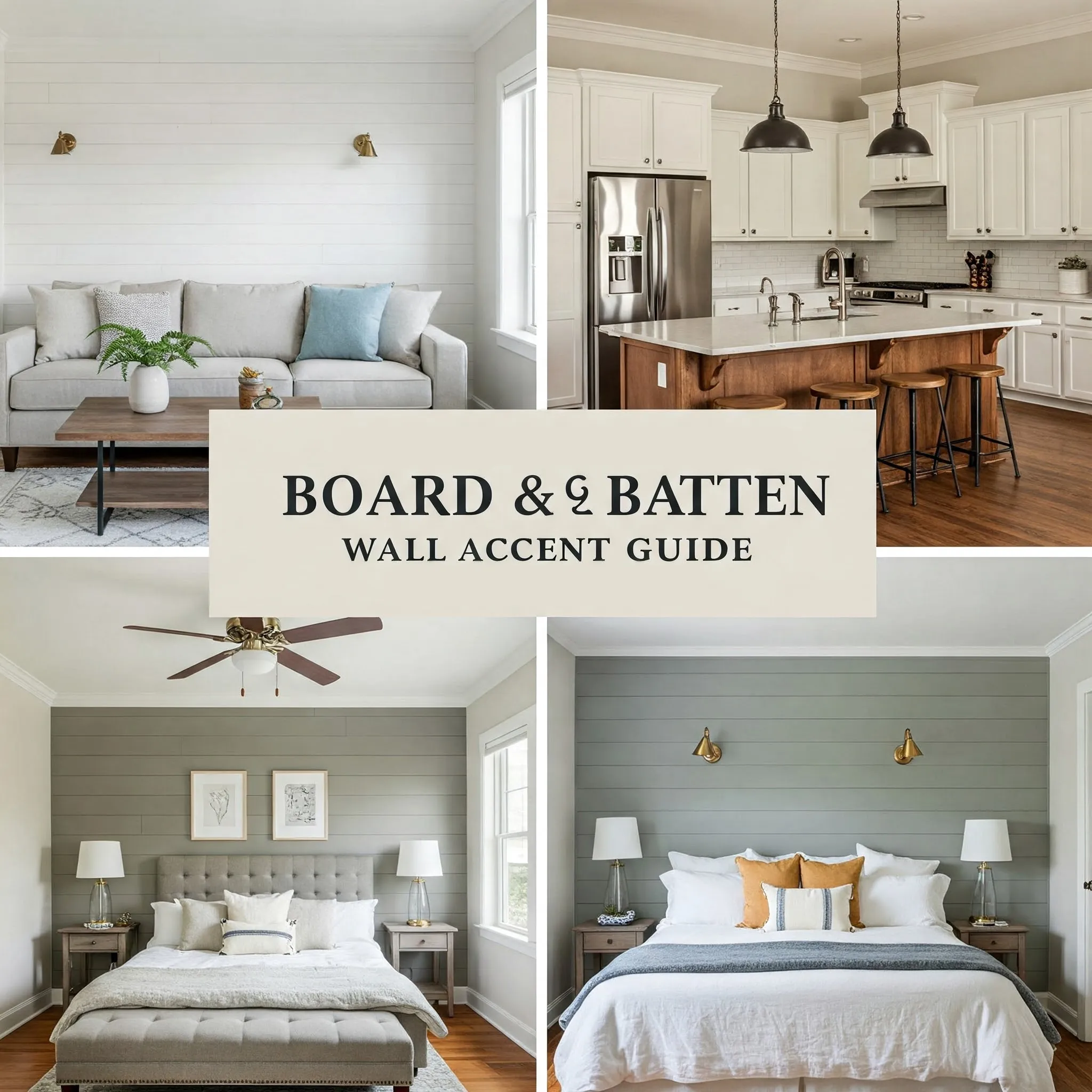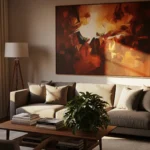A board and batten wall accent is a paneling technique featuring wide vertical boards, typically 1×6 or 1×8 inches, separated by narrow strips called battens, usually 1×2 or, 1×3 inches.This creates a textured, three-dimensional effect that adds depth and architectural interest. Once a staple of exterior barn siding, exterior board and batten siding still remains a popular outdoor application. this style has become a beloved interior design element, perfect for accent walls, wainscoting, or full-room treatments. Its adaptability makes it ideal for various aesthetics from rustic to minimalist.
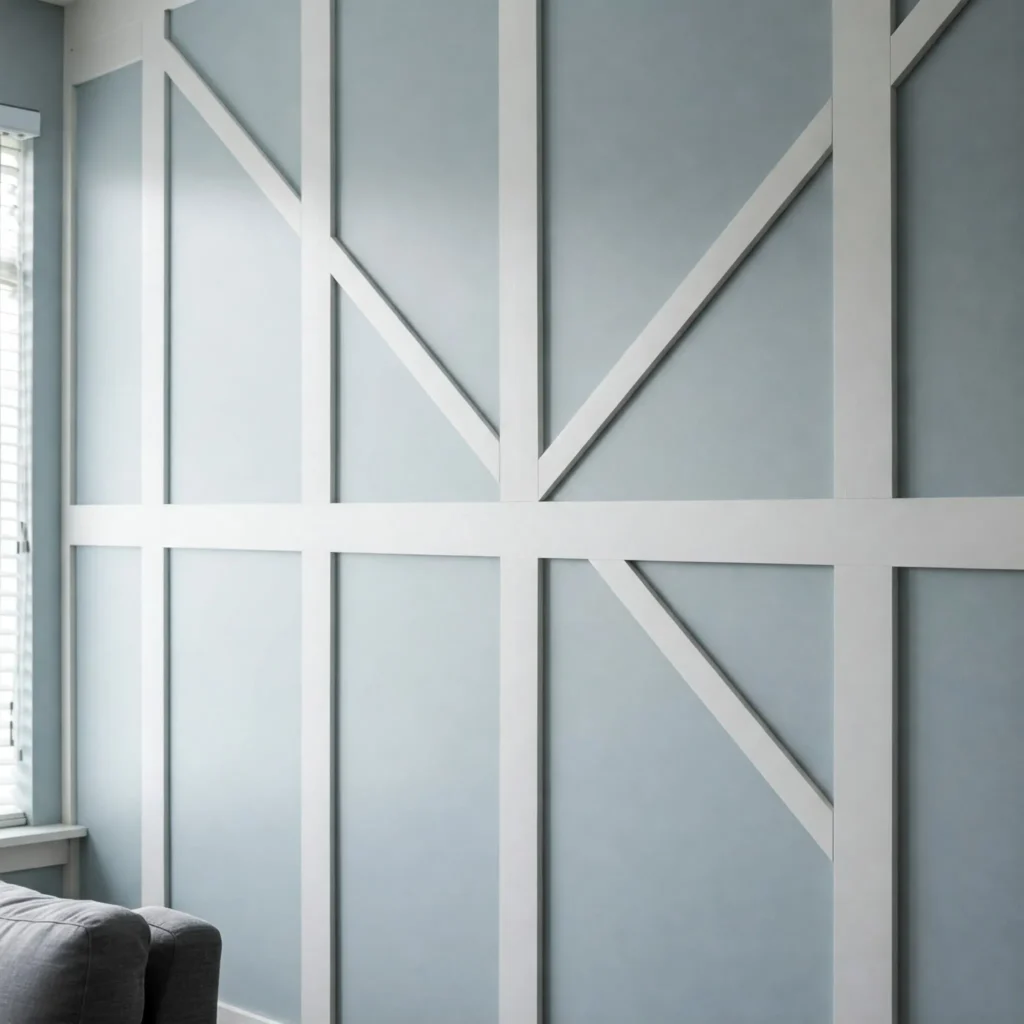
Ensure your wall surface is smooth before installation. Textured walls may require a drywall or plywood backing for a polished finish.
Why Choose Board and Batten for Your Walls?
Board and batten walls are more than just visually appealing — they offer practical advantages that make them a top choice:
Versatility: Complements styles like farmhouse, modern, or industrial. Customize board width, batten spacing and colors to match your decor
Durability: Protects walls from wear, ideal for high-traffic (busy) areas like hallways or dining rooms.
Aesthetic Appeal: The rhythmic pattern adds visual interest, making spaces feel inviting and dynamic.
Value Addition:Enhances home resale value with its architectural charm.
Pro Tip: Avoid overusing board and batten in every room to prevent a heavy, repetitive look. Use it as an accent for a maximum impact.
Trending Designs in 2025
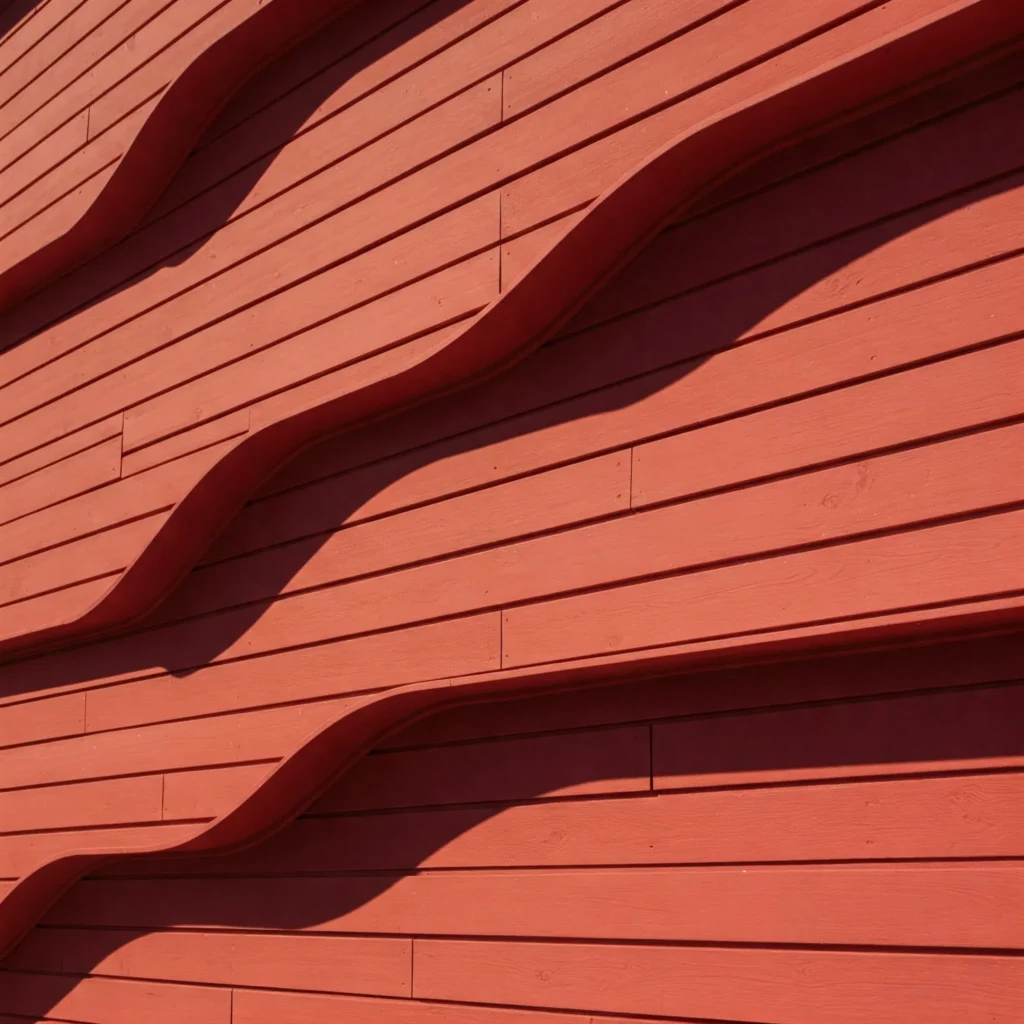
Board and batten continues to evolve, bringing fresh, innovative trends. These styles also align with the latest home decor trends:
- Mixed Materials; Pair wood battens with plaster, metal, or wallpaper for a modern, varied look.
- Curved Battens: Arched battens add an organic, serene feel perfect for bathrooms or bedrooms.
- Bold Colors: Jewel tones (emerald, sapphire) or warm neutrals (taupe, caramel) create striking accent walls.
- Minimalist Spacing: Wider batten gaps offer a clean, contemporary aesthetic for Scandinavian-inspired spaces.
Suggestion: Test color samples under your room’s lighting to ensure the hue complements the space. Dark colors can feel heavy in small rooms.
Creative Room Applications
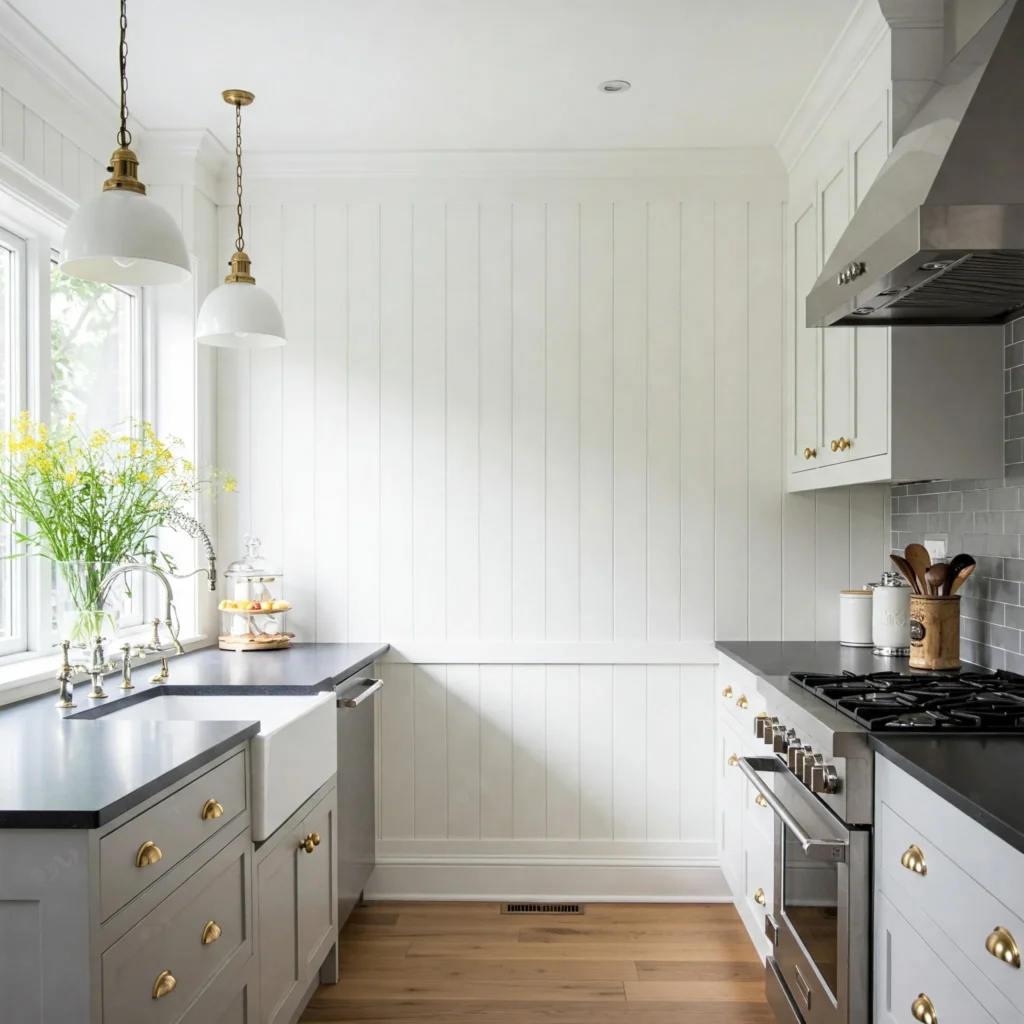
Board and batten brings instant character to any space. In the living room, a full-wall treatment in a contrasting shade becomes an eye-catching backdrop, while a half-wall in the bedroom topped with a narrow shelf creates a sleek display for art and plants. In moisture-prone bathrooms, opt for PVC or treated wood to enjoy a spa-like look without mildew worries.
Even kitchens benefit from battens behind an island or along a backsplash, adding subtle depth. Pairing with floating shelves in the kitchen can create a modern, layered effect. For tight areas, simply choose lighter paints and slimmer battens to keep the room bright and spacious.
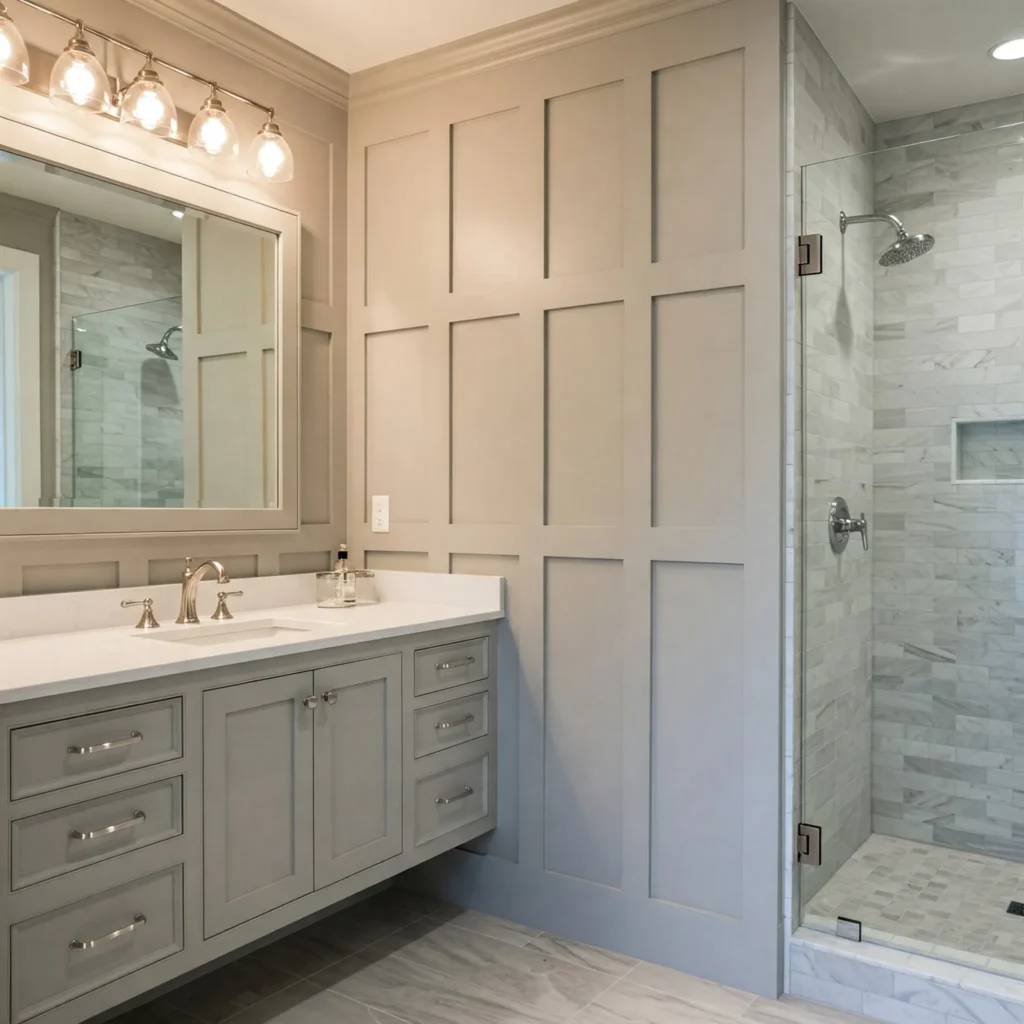
How to Install Board and Batten Wall Accent
Installing board and batten can be a rewarding DIY project or a professional job. you can also get inspired by other DIY wall decor ideas to complement your board and batten wall. Here’s a step-by-step guide:
- Plan Your Design: Choose board height (full wall, half wall, or wainscoting ), width, and batten spacing. Use a level for precision.
- Gather Materials: Boards (1×6 or 1×8), battens (1×2 or 1×3), wood adhesive, nails/screws, and paint/stain. MDF or PVC works for humid areas.
- Prepare the Wall: Clean and dry the surface. Apply a base coat of paint if desired.
- Install Boards: Attach boards vertically with adhesive and nails/screws, spacing as planned.
- Add Battens: Center battens over board gaps, securing them in place.
- Finish: Sand rough edges, fill nail holes, and apply paint/stain (glossy for modern, matte for rustic).

Improper installation (gaps, buckling):
Fix: Ensure proper fastener spacing and spacing for expansion; hire installers with board-and-batten experience and check for level/plumb walls
Suggestion: Use a stud finder to secure boards to studs for added stability, especially for full-wall installations.
Cost Considerations
Costs vary based on materials, labor, and project size:
| Item | Cost Range |
| Materials | $5–$15/sq ft (wood), $3–$7/sq ft (MDF/PVC) |
| Labor | $500–$2,000 (standard room) |
| Total (10×12 room) | $1,000–$3,000 (materials + labor) |
Fix and Suggestion: Save by using pre-primed MDF and DIY installation. Online tutorials can guide beginners.
How to Maintain the Look
Keep your board and batten wall pristine with these tips:
Cleaning: Dust with a soft cloth; use mild cleaner for spots.
Touch-Ups: Repaint/restain as needed, especially in high-traffic areas.
Moisture Protection: Apply sealant in bathrooms or kitchens to prevent warping.
Seal gaps with wood filler and caulk for a seamless look if boards shift over time.
Conclusion
Board and batten wall accents are a timeless way to infuse character into your home. With endless customization options and practical benefits, they remain a favorite in 2025. Whether you’re a DIY enthusiast or prefer professional help, this design can transform your space into something extraordinary. Start planning your board and batten the accent wall today!
FAQs
Is board and batten outdated?
No, it’s timeless and adaptable to modern tastes.
Can I use it in a rental?
Yes, with landlord approval. Consider peel-and-stick panels for easy removal.
What materials are best?
Wood for authenticity, MDF/PVC for affordability and moisture resistance.
Are accent walls outdated or out of style?
No, accent walls are still in style—especially with textured finishes like wood slats, stone, or bold paint. The trend now is to make them feel intentional and modern, not random or overly dramatic.
How to remove an accent wall in ACNH (Animal Crossing: New Horizons)?
Go into decorating mode, face the accent wall, and press “X” to remove it. This feature is unlocked once you progress in the game or get the Happy Home Paradise DLC.
How to choose the right wall for an accent wall?
Pick a wall that naturally stands out, like behind a bed, sofa, or fireplace. Avoid walls with windows or doors, and go with the one you notice first when entering the room.
How to make an accent wall?
Use paint, wallpaper, wood panels, or textures to create contrast. Stick to one wall, match your décor, and keep it simple for best results.

